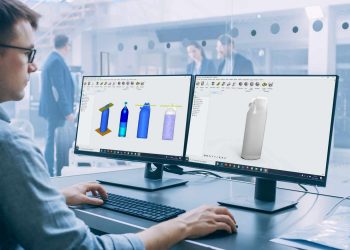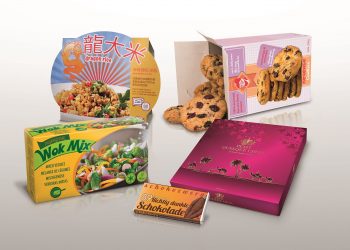Since 2019, the e-commerce giant has taken a new step towards efficiency and sustainability through its frustration free packaging program. Since the implementation of this new program, the companies that distribute through Amazon have had to adapt to it by following the protocols established by the company.
In this sense, it is essential to know what differences Amazon packaging presents with respect to standard packaging and how to achieve certification.
What is frustration free packaging?
The Amazon packaging program has aroused numerous doubts among packaging distributors and producers, which we try to answer in our article on frequent questions.
In summary, frustration free packaging is a packaging that has passed the new tests established by Amazon for sellers and distributors.
It is a new protocol that has been created with different objectives. Firstly, Amazon is trying to reduce packaging material to a minimum. However, it is also trying to ensure that loads continue to arrive at their destination safe and sound. Finally, the frustration free packaging program also tries to eliminate the packaging opening difficulties that the end user sometimes experiences.
Therefore, a Frustration Free package is one that, according to these new standards, is prepared to go through Amazon’s distribution system.
As such, the company has established as requirements for Amazon packaging the following:
That the packaging can be sent from its system without the need to add additional packaging.
That the packaging is easy to open.
That the packaging uses sustainable or recyclable materials.
Differences between frustration free packaging and standard packaging
Frustration free packaging has become one of the trends that will mark the future of packaging.
Some of the main differences from standard packaging include:
A more sustainable packaging. Through the Frustration Free packaging protocols, the aim is to eliminate the use of excessive packaging. The use of plastic packaging is also limited, taking into account the Amazon packaging material.
In this sense, Amazon encourages salespeople and distributors who use its sales channel to generate sustainable packaging.
This is not the first time the company has advocated for packaging that is less harmful to the environment: according to Amazon, in 2017 it managed to reduce the packaging materials used by 215,000 tons, avoiding the use of 360 million shipping boxes.
Certified and optimized packaging. With its frustration free packaging, Amazon proposes a series of tests and protocols that encourage companies to optimize the packaging they are using.
Through a series of tests, distributors and salespeople will have access to valuable information about their packaging and will be able to improve its design to eliminate unnecessary costs. At the same time, these tests guarantee that the product arrives healthy and safe to the final client.
A packaging that is easier to open. In the past, many retailers opted for standard packaging, such as plastic packaging, which was more visually appealing but complicated the opening process for the end customer.
Through frustration free packaging program, Amazon wants to eliminate the ‘wrap rage’ that users experience when they are unable to open a package quickly.
Advantages of applying frustration free packaging
Among the advantages of applying this protocol, Amazon mentions:
Elimination of additional costs
Amazon has set deadlines to implement its frustration free packaging program. In this way, those who do not comply with its rules and send prepared packaging to its distribution center from August 1, 2019 will be sanctioned. On the other hand, those who do apply the Amazon packaging guidelines will not face these fines.
Also, in this sense, the company proposes its frustration free packaging as a good time to study and optimize packaging for distributors and sellers.
Following the established protocols and tests, it is possible to access valuable information to design or modify the standard packaging chosen until now. In this way, it is possible to implement a suitable packaging not only for the Amazon program, but also for the specific distribution cycle of the product and its characteristics (for example, its fragility in the face of shocks or vibrations).
Lower transport costs
Amazon packaging allows companies to find the right size packaging to ship safely. This will lead to a reduction in transport costs by optimizing the space in the chosen means of transport to the maximum.
Better image for the final client
Frustration free packaging allows to optimize the packaging, guaranteeing the safety of the goods inside through the distribution cycle. In this way, the seller or distributor ensures the satisfaction of the final customer.
But Amazon goes beyond: with the removal of ‘wrap rage’ from packaging, the idea is to bring excellence to the customer experience, including when the package is opened.
Amazon Packaging: how to certify it
In order to obtain a frustration free packaging certificate, it is required to pass the tests established by Amazon, collected in the ISTA 6-Amazon.com protocol. This protocol, depending on the type of product to be transported, is divided into ISTA 6-Amazon.com-SIOC and ISTA 6-Amazon.com-OB.
Among the tests established in this standard, we can find:
Measurement of resistance to horizontal pressures or clamp test.
Free fall or drop test.
Evaluation of packaging resistance to compression.
Calculation of the capacity to resist vertical vibrations.
Test of horizontal impacts that affect the stability of the load during transport
Source : https://www.safeloadtesting.com/frustration-free-packaging-vs-standard-packaging/
Carlos Mora is the Sales Manager of Safe Load Testing Technologies, international provider of solutions for packaging optimization. He is Electronic Technical Engineer by the Polytechnic University of Valencia and holds an Executive Master of Project Management from the University of Valencia.
Currently Carlos is a member of the European board of ISTA (International Safe Transit Association) and collaborates in different working groups of the most important associations and committees in the packaging testing field: IAPRI association (International Association of Packaging Research Institute), ISTA (International Safe Transit Association), EUMOS (European Safe Logistics Association) and CEN (Comité Européen de Normalisation).
Carlos counts with more than 10 years of experience in sales area with a strong technical component in several industrial sectors, such as railway, pharmaceutical and packaging. In Safe Load Testing Technologies, he takes the responsibility of the sales team management and the relationship with customers, as well as the representation of the company in fairs and conferences.






